14 Top-Rated Tourist Attractions in Haifa
Modern Haifa is a bustling port town, but unlike many industry-focused cities, its landscape of steep cliffs rolling down to the shore gives it a beautiful setting. This is enhanced by the enormous and thoroughly beautiful Baha'i Gardens which dominate the central city in a series of cascading terraces. This major highlight in any Haifa itinerary is also an example of the modern town's overall harmonious approach to life. As well as being a centre for the Baha'i sect, Haifa's mixed population of Jews and Arabs is much less segregated here than elsewhere.
1 Baha'i Shrine and Gardens
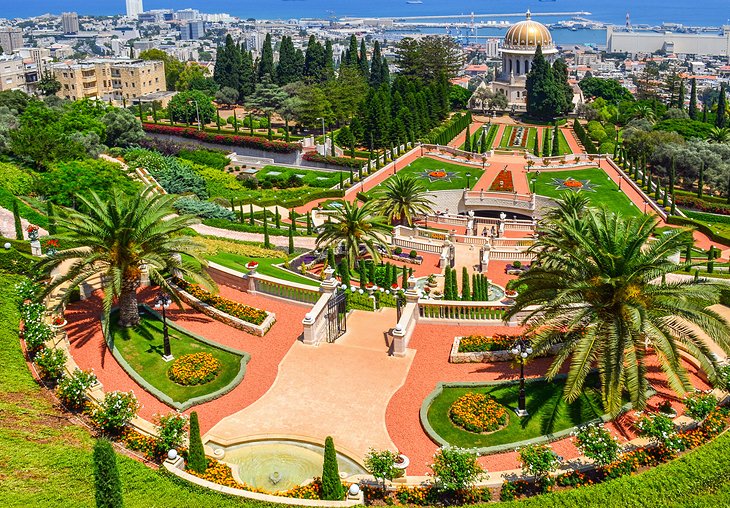
Baha'i Shrine and Gardens
The extraordinary Baha'i Gardens are Haifa's number one tourist attraction, and the Baha'i Shrine, with its golden dome, is the city's landmark monument. It contains the tomb of Iranian Mirza Al Mohammed, who declared himself 'Bab' ('gateway' to God) in 1844 and founded the Baha'i faith. Ali Mohammed was assassinated in Tabriz (Iran) in 1850, and his successor, Mirza Hussein Ali, who became known as Baha-u-Illah, fled to the Ottoman Empire where he proclaimed himself Imam in 1868. He died in 1892, having been held in captivity at Acre for 24 years. His followers secretly brought the remains of his predecessor, Mirza Ali Mohammed, from Iran to Haifa and built his tomb here. Today, the terraced gardens and shrine are an incredibly tranquil and beautiful memorial as well as an immaculate example of garden landscaping. UNESCO has declared them a World Heritage Site for their cultural as well as natural beauty. For those of the Baha'i faith they are also an important place of pilgrimage. The Shrine of the Bab, towards the top of the terraces, contains the tomb of Mirza Al Mohammed.
Hours: Outer gardens, daily 9am-5pm; Inner gardens & shrine, daily 9am-noon
Admission: Free (there is also a free tour of the gardens in English at noon every day, except Wednesday)
Location: off Yefe Nof Street, Central Haifa
Official site: www.ganbahai.org.il
2 Stella Maris Carmelite Monastery
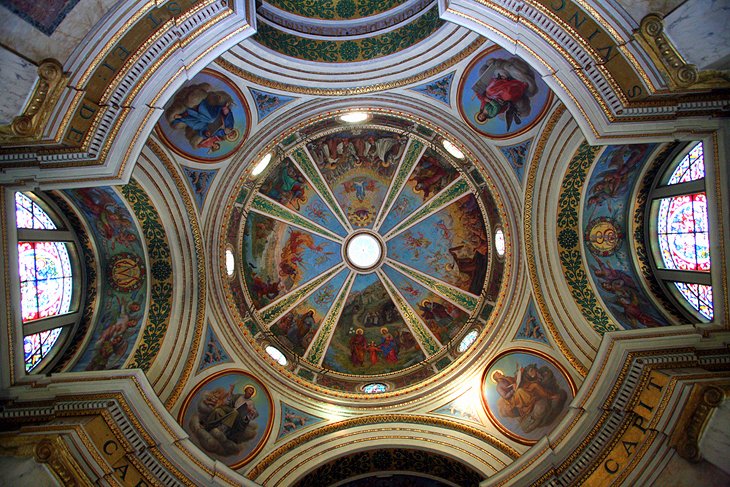
Stella Maris Carmelite Monastery
The present Stella Maris Carmelite Monastery was built in 1836 and is noted for its lush frescoes portraying the St Elijah. The interior also contains paintings of scenes of the lives of the prophets Isaiah and Ezekiel and has a cedar figurine of the Virgin known as the Madonna of Mt. Carmel. The Carmelite order was founded on Mount Carmel in 1150 as a hermetic Catholic sect. When the order sided with Napoleon during his battle against the Ottoman Turks in 1799, the Carmelite monasteries were destroyed. In front of the building is the tomb of the French soldiers who were killed during the battle. Afterwards, this monastery was rebuilt but was again razed in 1821 by the pasha of Akko (Acre). There is a small but interesting museum in a room adjoining the monastery entrance. From the monastery, a trail leads down to the grotto known as Elijah's cave, believed to be either the one-time dwelling place or tomb of Elijah.
Hours: Open daily 6am-noon & 3pm-6pm
Admission: Free
Location: off Tchernikovsky Street, West Haifa
3 Cable Car
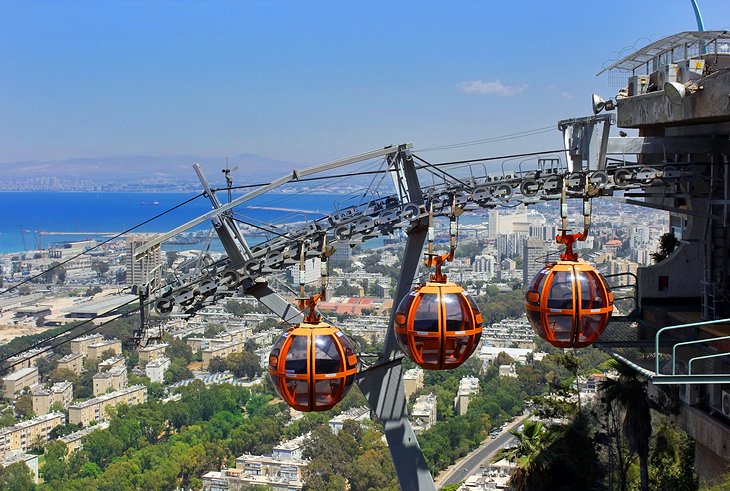
Cable Car
The cable car is the easiest way to get up to Stella Maris Carmelite Monastery and by far the most fun. There are excellent panoramic vistas all the way up. Even if you're not interested in visiting the monastery, the views from the lookout point at the top across Haifa and out to the Mediterranean are worth the ride.
Hours: Open 10am-6pm
Admission: One way 19NIS, return 28NIS
Location: entry from HaHaganah Street, Galshanim Beach
4 Elijah's Cave
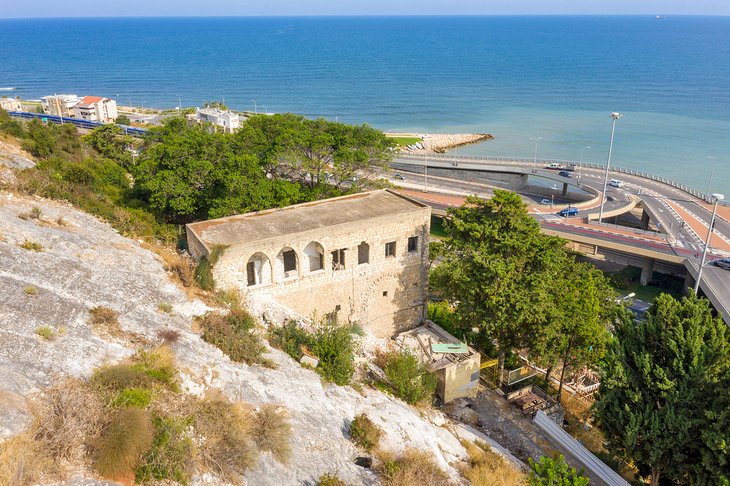
Opposite Stella Maris Carmelite Monastery, a path leads down to Elijah's Cave at the foot of the cape. Believers hold that Prophet Elijah hid here after killing the priests of Ba'al. It is an important pilgrimage site for Jews, Muslims, and Christians who all hold Elijah in high regard. Until 1948, the site was a mosque.
5 Downtown Haifa
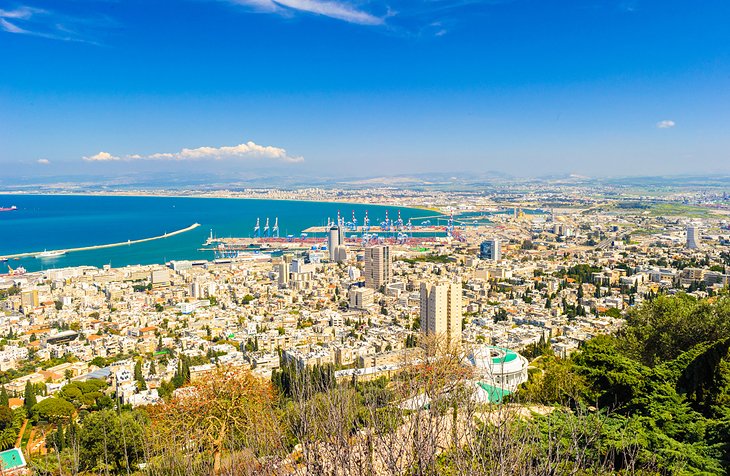
Downtown Haifa
Ben-Gurion Street is the old main street of the German Protestant colony founded here in 1868 by members of the Society of the Temple, who believed that settling in Palestine would bring about the Second Coming. The society continued to exist until the Second World War. The old houses, with their tiled roofs, have all been spruced-up and are very characteristic of their period. The street is now home to Haifa's best dining and shopping. The cemetery of these zealot settlers lies to the northwest, at 150 Jaffa Street, next to a British military cemetery of the First World War.
6 Beaches
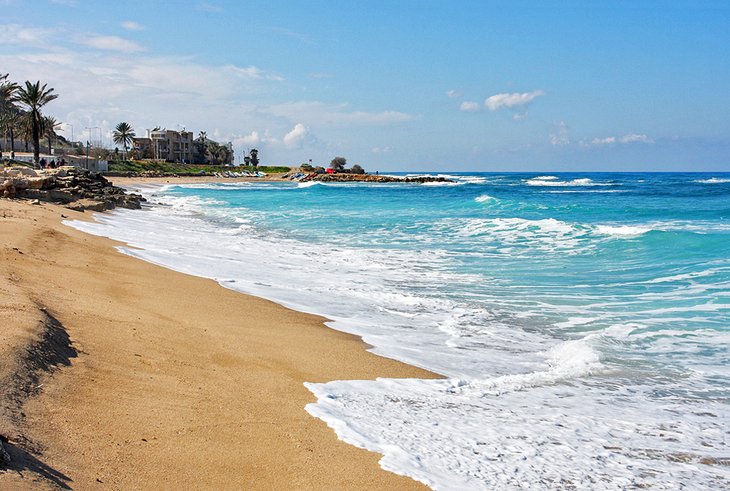
Beaches
Haifa has two main beaches. BatGalim Beach is a favorite with water sports enthusiasts. Windsurfers and kiteboarders take to the waves on sunny days. Hof HaCarmel Beach is more about laid-back sunbathing and general lounging. Both have excellent facilities with cafes and sun loungers for rent.
7 Mane Katz Museum
This excellent museum contains the paintings and sculptures of Mane Katz, who was an influential 20th century Jewish artist. As well as his expressionist art, Katz was a great collector and his personal collection of Judaica and antique furniture are on display here. Just down the road is the Tikotin Museum of Japanese Art (89 Hanassi Avenue) which features exhibits of Japanese artistry from the 14th century right up to the present day.
Address: 89 Ye'fe Nof Street, Carmel Centre
8 Ursula Malbin Sculpture Park
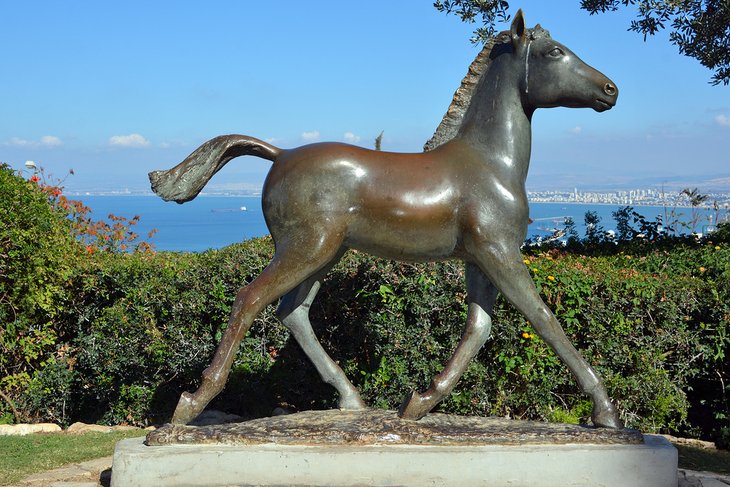
This lovely public park is full of gorgeous bronze statues and is a great place to relax after a morning of sightseeing. The statues were all made by German-born artist Ursula Malbin who lives part of the year in Israel.
Location: Haziyonut Street, Central City
9 Madatech
If you're travelling with children, make a beeline for this interactive science museum that will keep kids-big and small-thoroughly engrossed. The museum's stately building was once the base for Israel's Institute of Technology and was erected in 1913. Inside, there are all manner of science-based exhibits from zany and colourful chemistry displays to exhibits explaining aviation and green energy.
Hours: Open Sun-Thu 10am-3pm, Sat 10am-5pm, Fri 10am-1pm
Admission: adult 70NIS, student 35NIS, child 5-18yrs 65NIS, under 5yrs free
Address: 25 Shermaryahu Levin Street, Hadar HaCarmel
Official site: www.madatech.org.il
10 Caesarea
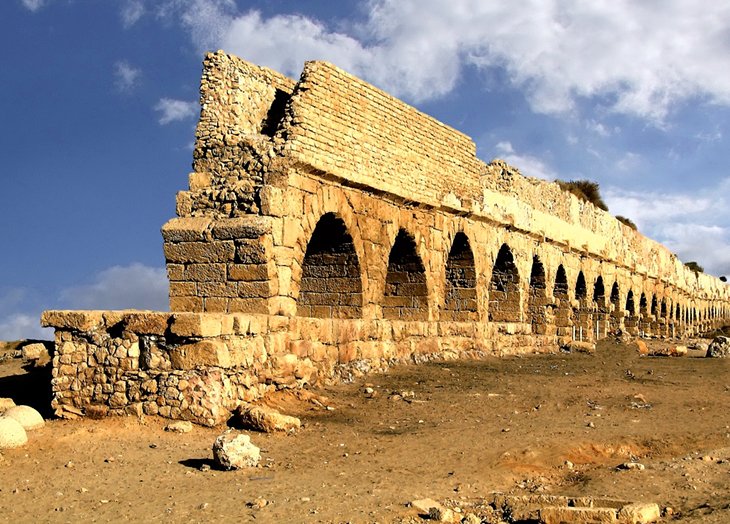
Caesarea
Halfway along the coast, between Haifa and Tel Aviv, Caesarea is home to one of Israel's most fascinating ancient sites. The site has been occupied since the 4th century BC, when the Phoenicians built a harbor here, and went on to become an important town for the Greeks and Romans. Herod the Great named the town Caesarea in honor of Emperor Augustus. It was during this period that the city really bloomed with temples, a theater, hippodrome, and busy harbor. By the 1st century AD, Caesarea was an important Christian center, but its era of grandeur ended with the Arab conquest in 637 AD. Archaeological investigation of the site continues, and a number of important finds from the site, including a figure of Artemis of the third century BC and an important Byzantine mosaic, are now in the Israel Museum in Jerusalem. The Crusader city remains and Roman theater (within the archaeological park itself) and the gorgeously melancholy remnant of the ancient aqueduct (upon the beach), that was part of the city's Herodian period, are the three highlights of a visit here.
Hours: Open daily 8am-6pm
Admission: adult 38NIS, child 23NIS
11 Mount Carmel
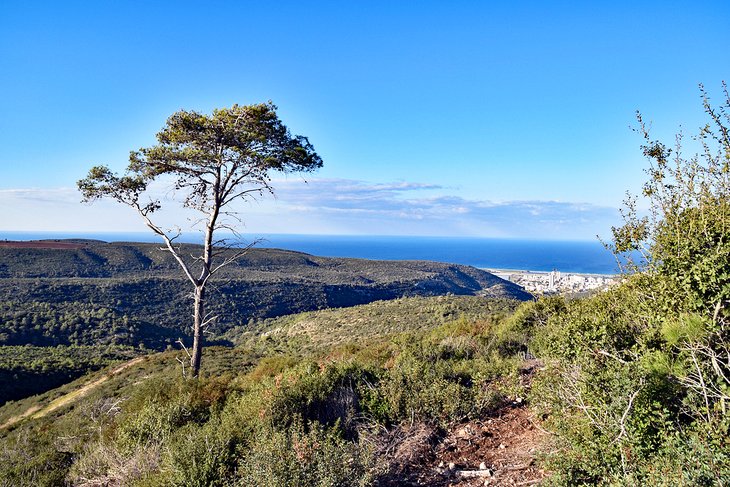
If you have your own wheels, tooling around the slopes of Mount Carmelmakes an excellent day trip from Haifa. The big historic sightseeing attraction here is the Carmelite Monastery of St. Elijah where, according to tradition, Elijah set up an altar during his conflict with the priests of Baal. The small settlements that speckle the slopes of the mountain are just as interesting as the church, if not more so. Ein Hod is an artists' village riddled with galleries, while Zichron Ya'acov is the headquarters of Israel's boutique wine-making industry. Bet Oren, on the lower slopes, is where the remains of the 'Carmel Man' (a Palaeolithic skeleton unearthed in caves 6 km west of the actual village) was found. The remains, and other finds from the site, are now in Jerusalem's Rockefeller Museum.
Location: off Tchernikovsky Street, West Haifa
12 Dor
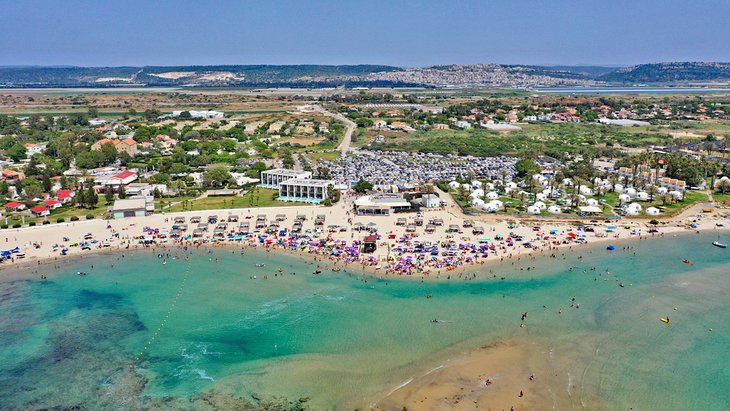
Dor
A favorite weekend hangout for stressed out city-folk from Haifa, Dor is home to one of Israel's most picture-perfect beaches. Although today, people mostly travel here for the pleasures of sun, sand, and sea; Dor has a rather illustrious history. Excavations here, just to the north of the modern town, have brought to light remains of the old harbor, a Crusader castle,and a 6th century Byzantine church. If you can manage to drag yourself away from the beach, the ruins are well worth a look.
Location: 29 km south of Haifa
13 Beit Shearim
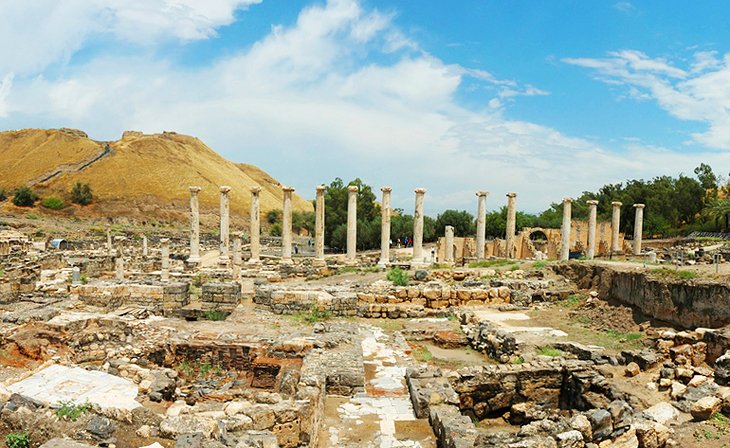
Beit Shearim
This fascinating archaeological site is particularly notable for the impressive catacombs excavated by B. Mazar in 1936, and later, by N. Avigad. Most of the ruins date from the 2nd century AD when the site was an important rabbinical city. Archaeology buffs will find the ancient remnants of Jewish life here engrossing.
Location: 20 km southeast of Haifa
14 Atlit
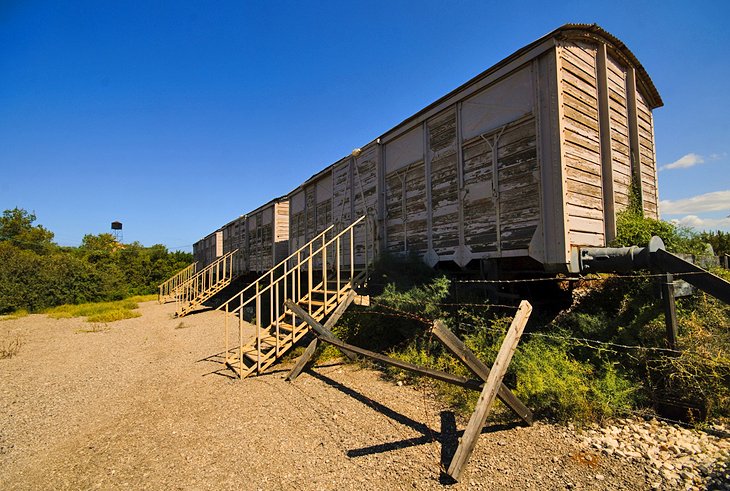
Atlit
Atlit is home to two interesting historical sites. Atlit Crusader castle dates from 1200 when it was known as Castrum Peregrinorum or Chateau des Pelerins (Castle of the Pilgrims). Unfortunately, these days you can't enter it as it is on military land. Much more recently, Atlit was the destination where Jewish immigrants, endeavoring to flee Nazi Germany during World War II, ended up being held when they arrived in Palestine. The ruling British held them here at Atlit Illegal Immigrants Camp, which has been preserved for posterity.
Other Notable Attractions
National Maritime Museum
The National Maritime Museum has a collection of model ships, maps, and charts that illustrate the history of seafaring in the Mediterranean region. Just down the road is the Clandestine Immigration and Naval Museum which documents the Zionist movement's efforts to get Jewish refugees into Palestine during the British Mandate period.
Location: Allenby Road, Central Haifa
Haifa University Museums
Haifa's University complex has a clutch of museums and sightseeing attractions that are worthy of a visit. The Eshkol Tower here has anobservation deck for excellent views across the city, and the tower's ground floor is home to the Reuben and Edith Hecht Museum, which traces Jewish history pre-Diaspora.
Location: 2.5 km south of Haifa
History
Although it was destroyed in the 7th century, Haifa was famed in the 11th century for its shipbuilding and its Talmudic college. In 1099, it withstood a six-month-long siege by the Crusaders, but was finally destroyed. In 1187, Saladin captured it from the Crusaders, but in 1191 it was recovered by Richard Coeur de Lion. The Crusaders were finally expelled from the town by Sultan Baibars. The monasteries of the Carmelite order, which was founded in Haifa in 1150 by a monk named Berthold, were destroyed after the fall of Acre in 1291, when the monks returned to Europe.
Under the Mamelukes (from 1517) and the Ottomans, Haifa was an insignificant fishing village. In 1740 Daher el-Amr, lord of Galilee, took the place and founded a new settlement, the present Old City, between Kikar Paris (Paris Square) and the Head Post Office. He also developed the harbor for the export of grain to Egypt. Under Ahmed el-Jazzar, who succeeded Daher in 1775, the Carmelites were able to reestablish themselves near Elijah's Cave. In 1799, during Napoleon's advance on Akko (Acre), their monastery was used as a military hospital, but after Napoleon's withdrawal the French wounded were killed by Ahmed el-Jazzar.
The importance of Haifa increased with the coming of steamships, for which the nearby harbor of Akko was too small. In 1868, the population was increased by the arrival of German settlers, members of the Society of the Temple. When the German Emperor, William II, visited Haifa in 1898 a jetty was constructed, and thereafter the development of the port continued. The Emperor promoted the idea of linking Haifa with the Hejaz railroad and thus opening up the town's hinterland. The upswing in the economy led to the expansion of the Old City to the northwest, in the direction of the Germany Colony. The first Jewish school had been established in 1881. Christians from Lebanon and Arabs also now moved into the town, and two sects that had broken away from Islam, the Baha'i from Iran and the Ahmadiya from India, made Haifa their headquarters.
In September 1918, British forces occupied the town. Thereafter a new railroad line was built, linking Haifa with Egypt by way of Gaza. New industrial installations came into being. This development continued in spite of conflicts between the Jewish and the Arab populations. The modern deep-water harbor was completed in 1933, followed in 1934 by the development of the oil terminal at the end of the pipeline from Iraq.
In 1936, following further outbreaks of violence, the Jewish population left the eastern part of the lower town and concentrated in the Hadar HaKarmel district. Haifa was thus for all practical purposes divided into two. During the Second World War, the German members of the Society of the Temple were evacuated. After the war, there was continuing conflict between the Jewish underground organization Haganah, the British naval base, and the Arabs - a conflict from which Haganah emerged victorious.
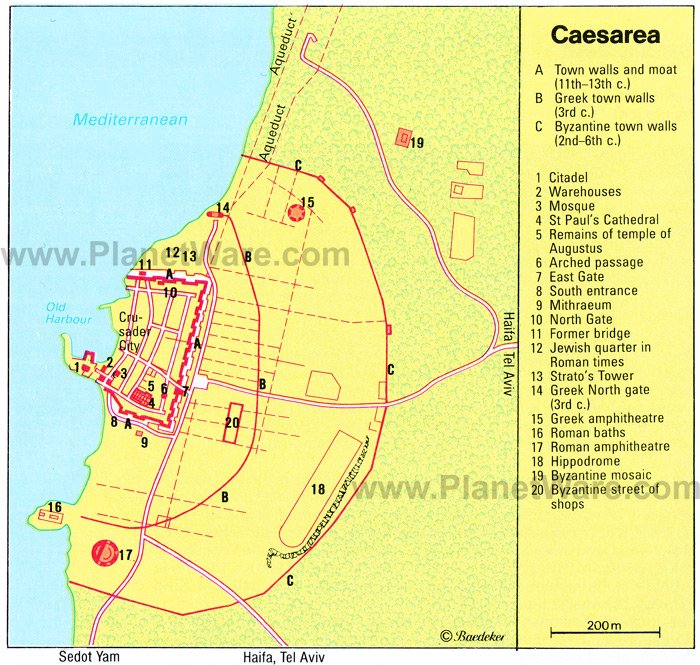
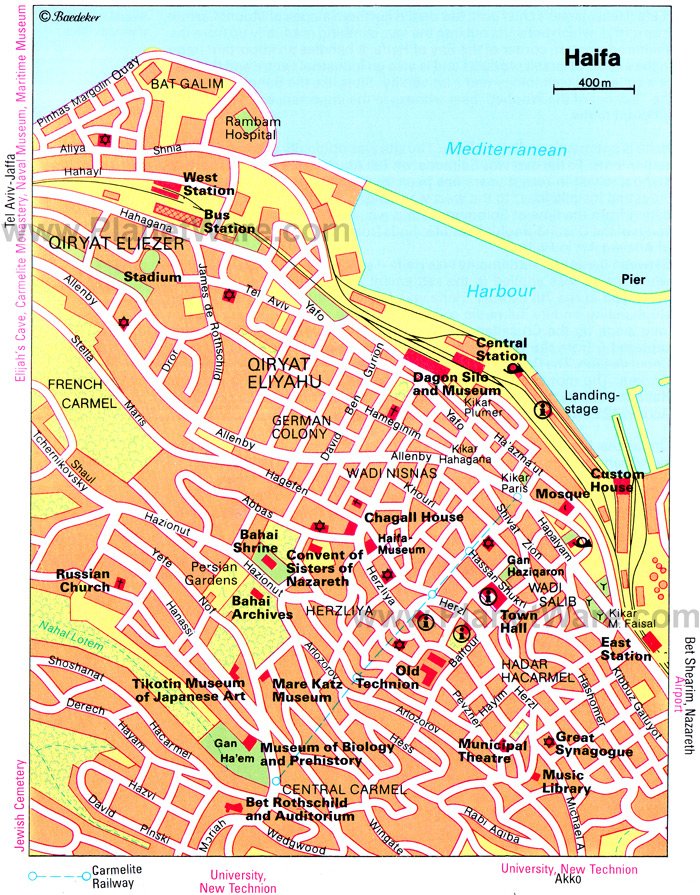
No comments:
Post a Comment